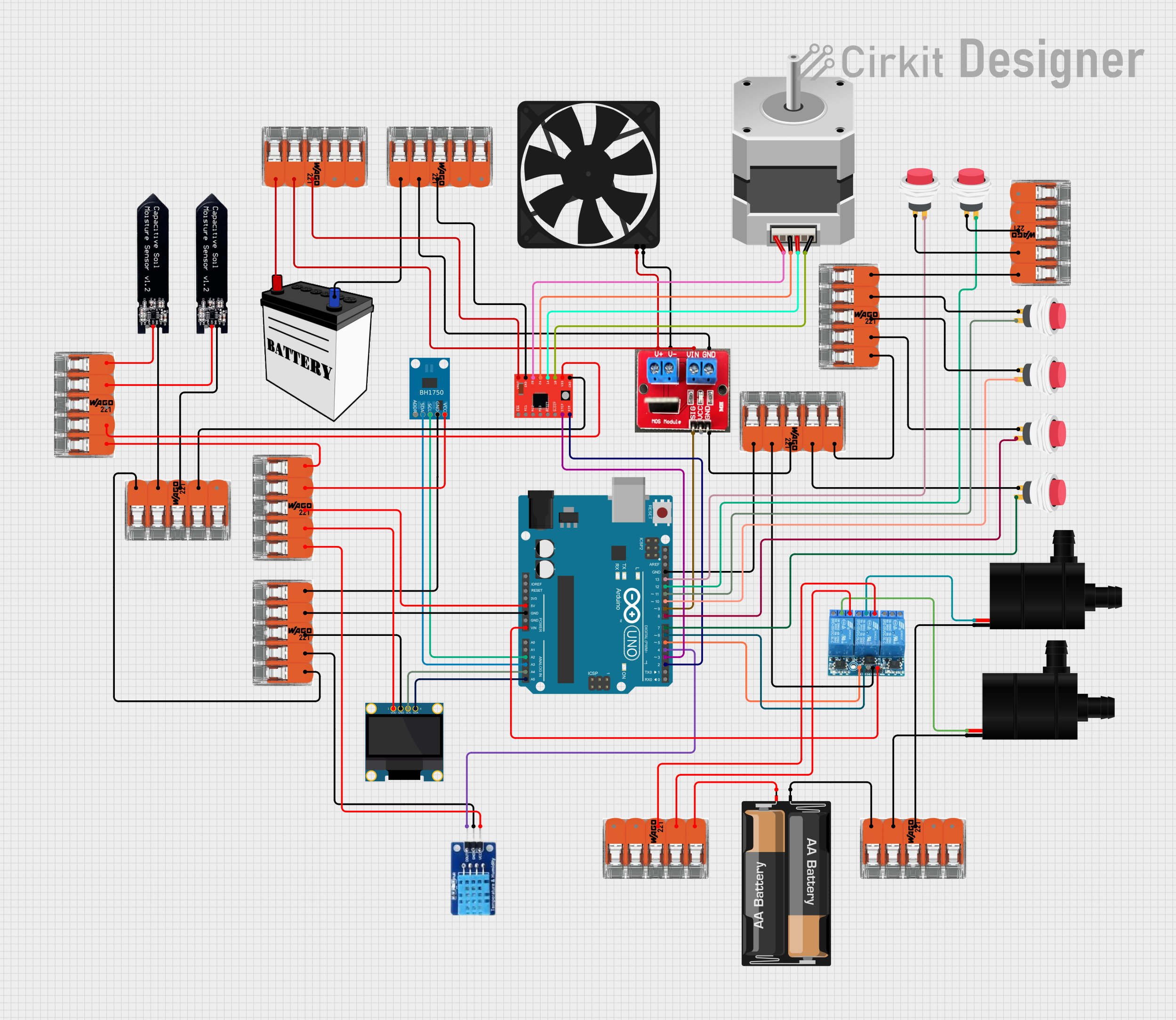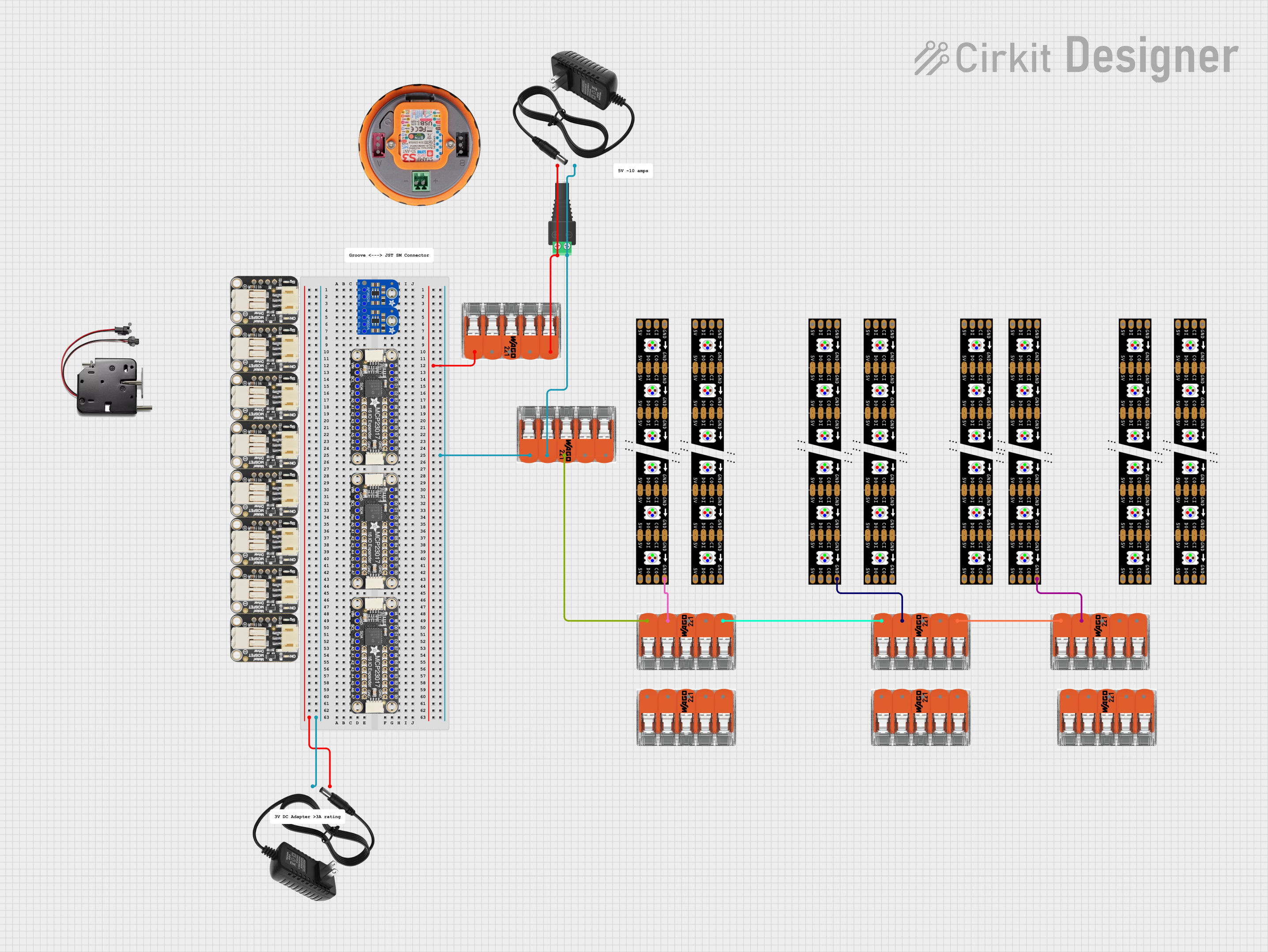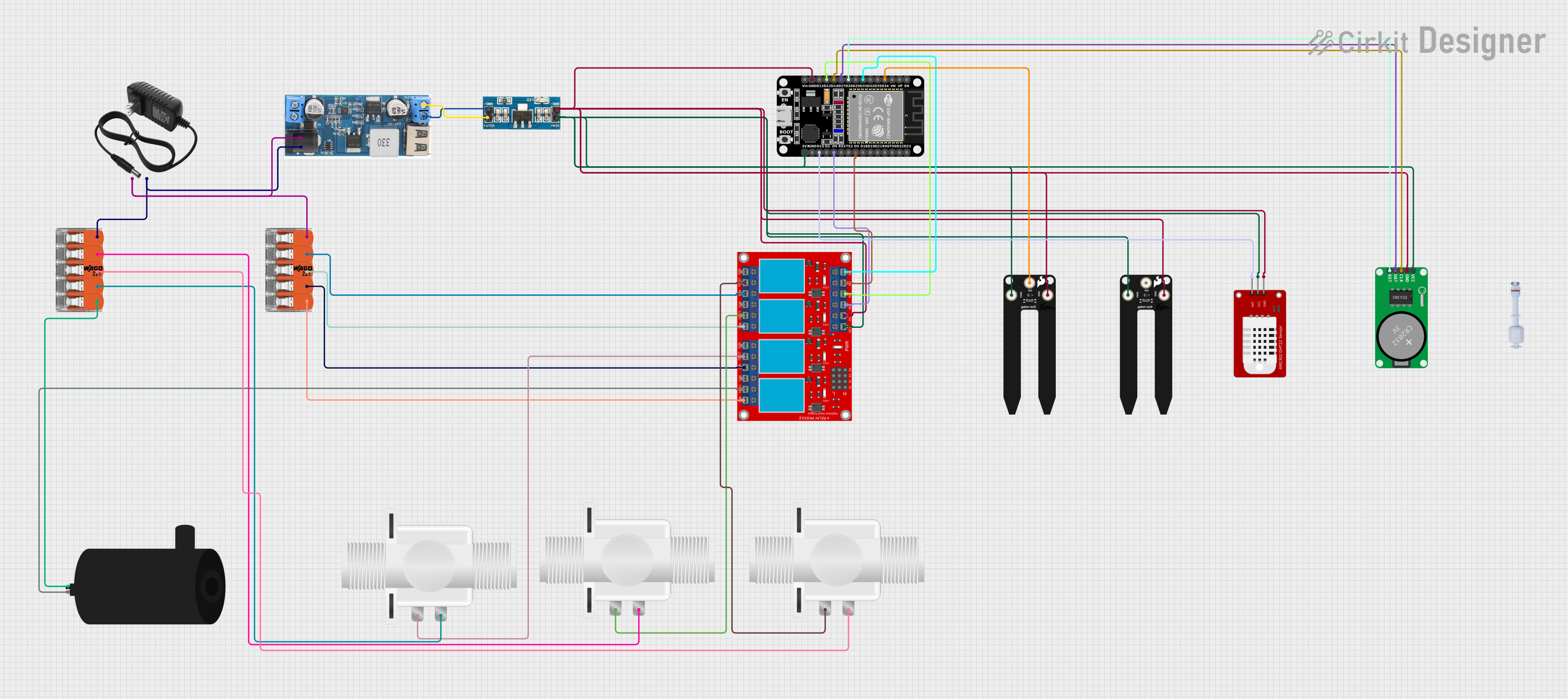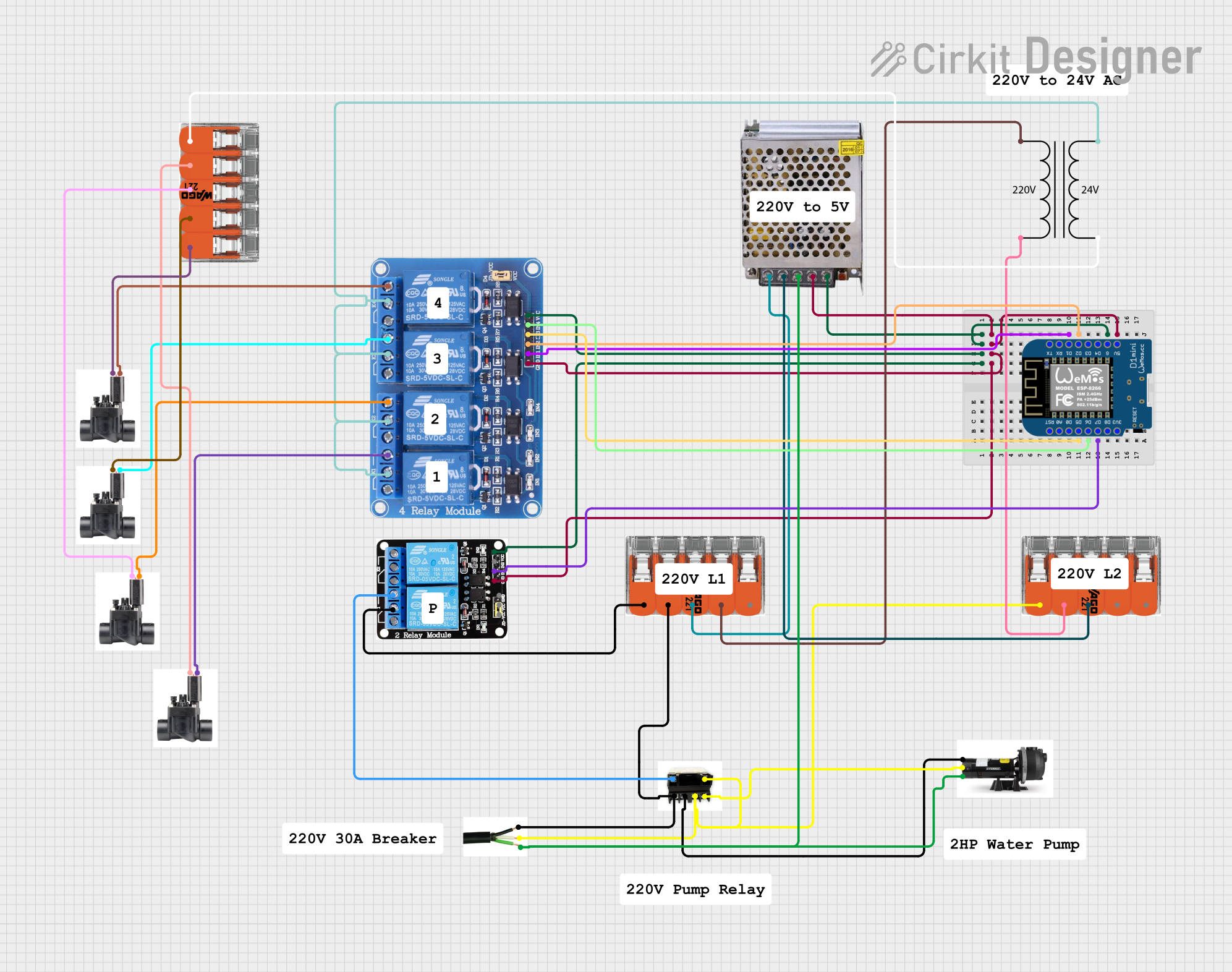
How to Use WAGO 221-413: Examples, Pinouts, and Specs

 Design with WAGO 221-413 in Cirkit Designer
Design with WAGO 221-413 in Cirkit DesignerIntroduction
The WAGO 221-413 is a compact, push-in wire connector designed for quick, reliable, and tool-free electrical connections. Its transparent housing allows for easy inspection of wire connections, ensuring proper installation. The connector supports a wide range of wire sizes, making it versatile for various electrical applications. It is particularly valued for its ease of use, compact design, and secure connections.
Explore Projects Built with WAGO 221-413

 Open Project in Cirkit Designer
Open Project in Cirkit Designer
 Open Project in Cirkit Designer
Open Project in Cirkit Designer
 Open Project in Cirkit Designer
Open Project in Cirkit Designer
 Open Project in Cirkit Designer
Open Project in Cirkit DesignerExplore Projects Built with WAGO 221-413

 Open Project in Cirkit Designer
Open Project in Cirkit Designer
 Open Project in Cirkit Designer
Open Project in Cirkit Designer
 Open Project in Cirkit Designer
Open Project in Cirkit Designer
 Open Project in Cirkit Designer
Open Project in Cirkit DesignerCommon Applications and Use Cases
- Electrical installations in residential, commercial, and industrial settings
- Lighting systems and fixture connections
- Junction boxes and distribution boards
- Temporary or permanent wiring setups
- Prototyping and testing electrical circuits
Technical Specifications
The WAGO 221-413 is designed to meet the needs of modern electrical installations. Below are its key technical details:
Key Technical Details
| Parameter | Specification |
|---|---|
| Manufacturer | WAGO |
| Part Number | 221-413 |
| Wire Size Range | 0.14 mm² to 4 mm² (24–12 AWG) |
| Voltage Rating | 450 V AC |
| Current Rating | 32 A |
| Housing Material | Polycarbonate (transparent) |
| Operating Temperature | -20°C to +85°C |
| Number of Connections | 3 |
| Connection Type | Push-in with lever operation |
| Dimensions (L x W x H) | 18.7 mm x 13.1 mm x 8.3 mm |
| Certifications | CE, UL, ENEC, and RoHS compliant |
Pin Configuration and Descriptions
The WAGO 221-413 has three connection points for wires. Each connection point is equipped with a lever for easy wire insertion and removal. The table below describes the pin configuration:
| Pin Number | Description |
|---|---|
| 1 | Wire connection point 1 |
| 2 | Wire connection point 2 |
| 3 | Wire connection point 3 |
Usage Instructions
The WAGO 221-413 is designed for ease of use, even for those with minimal experience in electrical work. Follow the steps below to use the connector effectively:
How to Use the WAGO 221-413
Prepare the Wires:
- Strip the insulation from the wire ends, leaving approximately 10–12 mm of exposed conductor.
- Ensure the wire ends are clean and free of damage.
Open the Lever:
- Lift the lever on the WAGO 221-413 to open the clamping mechanism.
Insert the Wire:
- Insert the stripped wire end into the connection point until it reaches the stop.
Close the Lever:
- Push the lever back down to secure the wire in place. The transparent housing allows you to visually confirm the connection.
Repeat for Additional Wires:
- Repeat the process for the remaining connection points as needed.
Inspect the Connections:
- Verify that all wires are securely clamped and properly aligned.
Important Considerations and Best Practices
- Ensure the wire size is within the supported range (0.14 mm² to 4 mm² or 24–12 AWG).
- Avoid over-stripping the wire insulation, as this may lead to exposed conductors outside the connector.
- Do not exceed the voltage or current ratings of the connector.
- Use the connector in environments within the specified operating temperature range (-20°C to +85°C).
- For safety, always disconnect power before working on electrical connections.
Example: Connecting to an Arduino UNO
While the WAGO 221-413 is not an electronic component like a resistor or sensor, it can be used to simplify wiring in Arduino projects. For example, you can use it to connect power and ground wires from an Arduino UNO to external components.
// Example: Using WAGO 221-413 for Arduino power distribution
// This example assumes you are using the WAGO 221-413 to connect
// multiple components to the Arduino's 5V and GND pins.
void setup() {
// No specific code is required for the WAGO 221-413 itself,
// as it is a passive component for wire connections.
// Example: Initialize a pin for an LED
pinMode(13, OUTPUT); // Set pin 13 as an output for an LED
}
void loop() {
digitalWrite(13, HIGH); // Turn the LED on
delay(1000); // Wait for 1 second
digitalWrite(13, LOW); // Turn the LED off
delay(1000); // Wait for 1 second
}
In this example, the WAGO 221-413 can be used to distribute the 5V and GND connections from the Arduino to multiple components, such as LEDs, sensors, or other devices.
Troubleshooting and FAQs
Common Issues and Solutions
Issue: Wire slips out of the connector.
- Solution: Ensure the wire is fully inserted into the connection point and the lever is securely closed. Check that the wire size is within the supported range.
Issue: Poor electrical contact.
- Solution: Inspect the stripped wire end for damage or corrosion. Re-strip the wire if necessary and reinsert it into the connector.
Issue: Connector does not fit in a tight space.
- Solution: Consider using a smaller WAGO connector model, such as the 221-412 (2 connections), if fewer connections are required.
Issue: Overheating during operation.
- Solution: Verify that the current passing through the connector does not exceed the 32 A rating. Check for loose connections and ensure proper wire gauge is used.
Frequently Asked Questions
Q1: Can the WAGO 221-413 be reused?
A1: Yes, the WAGO 221-413 is designed for multiple uses. Simply lift the lever to release the wire and reuse the connector.
Q2: Is the WAGO 221-413 suitable for stranded wires?
A2: Yes, the connector supports both solid and stranded wires within the specified size range.
Q3: Can the WAGO 221-413 be used outdoors?
A3: The connector is not specifically rated for outdoor use. If used outdoors, ensure it is housed in a weatherproof enclosure.
Q4: How can I verify a secure connection?
A4: The transparent housing allows you to visually inspect the wire position and clamping mechanism.
By following these guidelines and best practices, the WAGO 221-413 can provide reliable and efficient electrical connections for a wide range of applications.